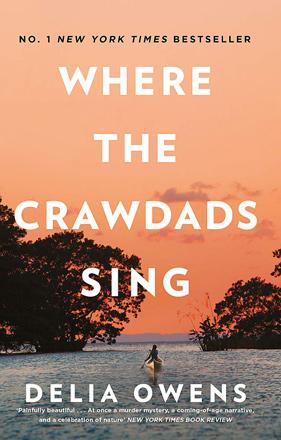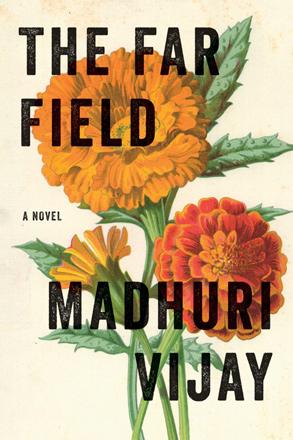You are here
‘The marsh became her mother’
By Sally Bland - Aug 09,2020 - Last updated at Aug 09,2020

Where the Crawdads Sing
Delia Owens
UK: Corsair, 2019
Pp. 368
Having published three books about her life as a wildlife scientist, American zoologist Delia Owens turns to fiction with an evocative novel, set in the coastal marshlands of North Carolina. If you think that marsh is synonymous with swamp, think again: “Marsh is not swamp. Marsh is a space of light, where grass grows in water, and water flows into the sky… Swamp water is still and dark, having swallowed the light in its muddy throat.” (p. 3)
Nature is a main theme in this novel, but there are many others: a murder mystery, romance, domestic abuse, loneliness, “the outsider”, trust, small-town prejudice and a whole new way of looking at the world. What holds all the themes together is a singular protagonist, Kya, dubbed the Marsh Girl by the village people. Due to her peculiar life experience and extraordinary intelligence, she is the main advocate for a new view of the world, which involves humans nearly merging with nature.
Kya lives in a shack between the marsh and the sea, the family’s poverty seemingly inescapable as her father, a frustrated, partially disabled veteran, haunted by memories of World War II, drinks up most of his compensation check. Worse still, his drunkenness unleashes extreme violence on his family. Kya’s mother leaves home when she is only six, followed by her older brother. She lives for a time with her father, until he too disappears. “She knew Pa was the reason they all left; what she wondered was why no one took her with them.” (p. 13)
This is the original source of her loneliness and distrust of others, but it is soon exacerbated by the scorn and harassment she faces from the villagers. Amazingly, she learns to survive alone. Her father left his motor boat behind, and it becomes her means of transport and livelihood, as she fishes and digs for mussels, bartering her catch for fuel and small change with which she buys a few groceries, but mostly she subsists on what she finds in the marsh and her small garden. At one point, a truant officer finds her and takes her to school; she wants to learn, but after one day of ridicule, she never goes back and becomes adept at hiding away in the marsh, her only friends the seagulls. “Kya laid her hand upon the breathing, wet earth, and the marsh became her mother.” (p. 34)
It is significant that the only people who help Kya are Jump and his wife, Mabel, who are also outsiders in the eyes of the white villagers, though they are highly respected in their own Black community, this being the segregated America of the 1950s. By the time the novel reaches a climax in 1969, things haven’t changed much.
Eventually, Kya befriends Tate, the son of a fisherman, who is as interested in the natural environment as she is. He teaches her to read, enabling her to label all the specimens she has been collecting — feathers, insects, shells and flowers. They fall in love exploring the marsh, uncovering: “Wonders and real-life knowledge she would’ve never learned in school. Truths everyone should know, yet somehow, even though they lay exposed all around, seemed to lie in secret…” (p. 113)
But when Tate goes off to university to study biology, she feels abandoned once more; her loneliness and distrust of the outside world spike. By this time, she is a young woman with emotional and sexual urges, and she gets involved with Chase, a rich, handsome — and manipulative athlete from the village. To him she is an exotic toy, and he promises to marry her with no intention of doing so. When she learns he has married a girl from the village, her dignity is deeply damaged. “With Chase, she felt exposed, as if someone was filleting her like a fish. Shame welled up inside… Giving away another piece of herself just to have someone else.” (p. 168, 177)
Owens does something tricky with time. The novel opens with a prologue dated 1969, telling of the villagers’ discovery of Chase’s dead body. Then the story switches back to the 1950s to follow Kya’s growing up, interspersed with chapters about the investigation of the murder until 1969, when Kya is arrested as a suspect, town gossip having conspired to pin the blame on her. Tension builds as the two timeframes draw together: Can the authorities find her? Can she get a fair trial? Will she be able to rebuild her life once again? Will the marsh survive? Can people like Kya exist outside the place “Where the Crawdads Sing” — the farthest reaches of the marsh, scarcely penetrable, where nature reigns supreme? It is very hard not to skip ahead to find out.
Owens tells Kya’s story intertwined with breathtakingly beautiful descriptions of nature, astute observations about its laws, and striking parallels between human and animal behaviour. Contrasting attitudes towards the marsh, whether to use it, like Chase, or study and respect it, like Tate and Kya, she delivers a thoughtful environmentalist message about the interdependence of nature, and humankind’s reliance on it. With a definite feminist slant, Owens also offers searing social commentary, especially about the exclusion of those who are different.
“Where the Crawdads Sing” is available at Legenda bookstore.
Related Articles
The Far FieldMadhuri VijayNew York: Grove Press, 2019Pp.
LOS ANGELES — Marvel’s latest superhero flick “Thor: Love and Thunder” pounded opponents for a second straight week to top the North America
The Japanese LoverIsabel AllendeTranslated by Nick Caistor and Amanda HopkinsonNew York: Atria Books, 2015Pp.


















